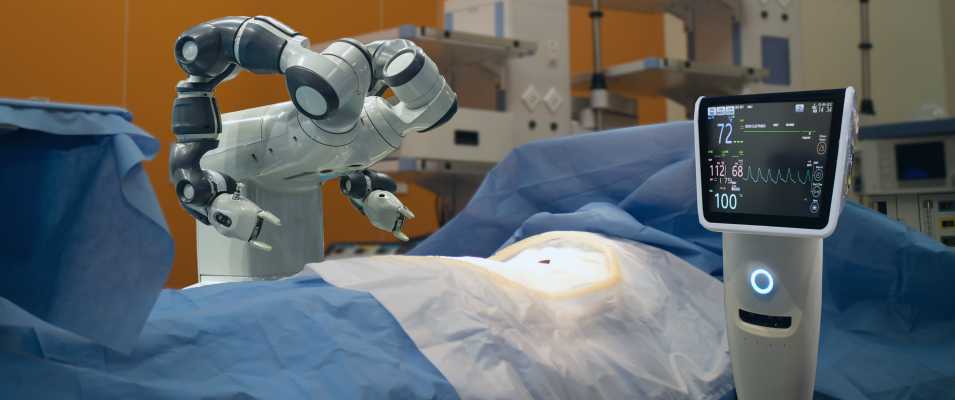Robotic Surgery for Endometriosis; For some women with endometriosis, minimally invasive surgery is the best treatment option. Both laparoscopic surgery and robotic-assisted surgery (with da Vinci technology) can be performed through small incisions in the abdomen.
Robotic surgery allows surgeons to see and manipulate pelvic organs with greater accuracy. This is especially helpful for bowel endometriosis. It also helps avoid damage to important organs like the uterus.
What is robotic endometriosis surgery?
Robotic surgery is a minimally invasive approach to treating endometriosis that may be a good choice for certain patients. It is a more advanced form of “keyhole” or laparoscopy surgery that can be more precise and reduce blood loss.
During robotic surgery, instruments and a video camera are inserted through small incisions. A surgeon controls the system using a console, which displays images of the pelvic organs in high resolution.
When compared to traditional laparoscopic surgery, robotic surgery may allow the surgeon to perform smaller incisions with greater precision and range of motion, and provide a higher-resolution three-dimensional anatomical view. These advantages may help gynecologic surgeons perform endometriosis procedures faster, with fewer complications and less pain.
Your doctor will discuss all your treatment options and decide which is right for you. If you choose to have robotic surgery, you should make sure your doctor is experienced in the procedure and has good outcomes. You should also ask about the recovery time.

Robotic excision of endometriosis
Robotic surgery is an advanced form of keyhole or laparoscopy that uses specialized instruments that are inserted through small ports (channels through the skin) and controlled remotely by a surgeon sitting at a console a few feet away from you. It offers many benefits over traditional laparoscopy, especially in cases of bowel endometriosis.
It also allows for better visualization of the surgical site, which can improve precision and reduce pain. It has articulated instruments, 3D imaging, and tremor filters that give the surgeon a magnified view of the operative site.
Another benefit of robotic surgery is that it provides real-time observation of vascular and microvascular flow. This allows for improved diagnosis and treatment of critical conditions, such as obese patients or extragenital endometriosis that affects the intestines, bladder, ureters, or diaphragm.
This study aimed to evaluate the safety and feasibility of robotic-assisted surgery in 31 patients with high-stage pelvic endometriosis including ureteral involvement. Robotic-assisted laparoscopic excision of ureteral endometriotic nodules was feasible and allowed complete resection of ureteral nodules in all patients.
Robotic laparoscopy endometriosis
Endometriosis is a condition that causes tissue that looks and behaves like endometrial tissue to grow outside of your uterus. This is a persistent inflammatory disease that affects 10% to 15% of women of childbearing age, causing pain, irregular bleeding and the development of adhesions that look like scars.
Robotic laparoscopy is a minimally invasive procedure that can be used to diagnose and remove endometrial implants. It can also be used to treat a severe form of endometriosis called deep endometriosis. It can help reduce pain and improve fertility in patients with this disease.
Robotic surgery for stage 4 endometriosis
Endometriosis is a common gynaecological disease in which endometrium-like cells are implanted outside the uterus, mainly in the abdominal cavity. It causes severe pain symptoms from teenage years to menopause, deteriorating fertility and quality of life.
In advanced stages of endometriosis (stage 3 and stage 4 disease), implants can penetrate into bowel, rectovaginal septum and urinary organs. In addition, they can cause adhesion formation in the abdominal cavity and pelvic region.
Robotic surgery is an interesting approach for the surgical management of advanced endometriosis. Although there is limited evidence, it may provide certain patient and work-ergonomic-related benefits as well as reduce procedure-related costs compared to standard laparoscopic surgery.
This study is the first to compare the perioperative outcomefors of robotic surgery for deep ureteral endometriosis with conventional laparoscopic surgery in a case series of 31 patients. Results indicate that minimally invasive treatment with robotic assistance is feasible, and that perioperative outcomes are comparable to those of conventional laparoscopic surgery.
Related Article: Fibromyalgia and Endometriosis